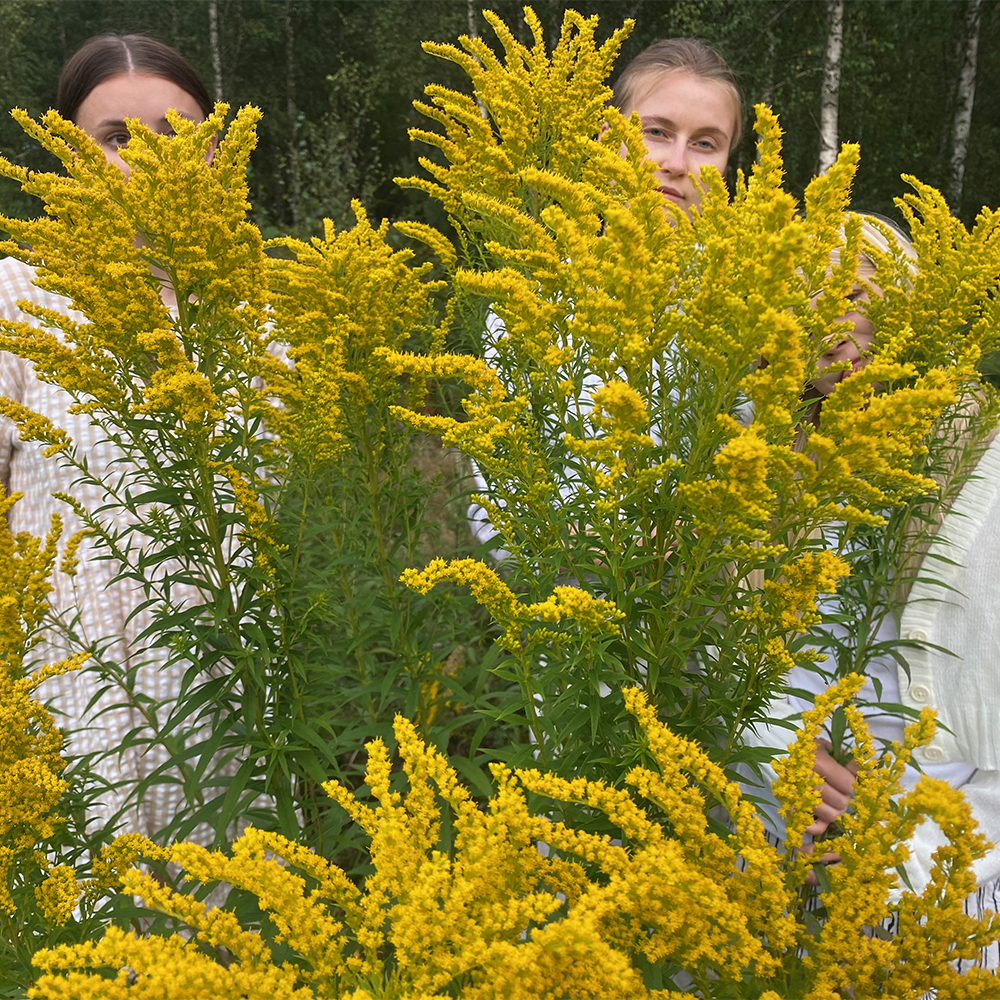Gold and green forests
Crafted life stories about Canadian Goldenrod and elm trees
DOI:
https://doi.org/10.7577/formakademisk.5398Keywords:
Life stories, craft, invasive spieces, elm, Canadian GoldenrodAbstract
Sweden's fauna and flora are constantly changing. Humans have not only deliberately promoted and introduced new species in horticulture, agriculture and forestry, they have also acted as a vector for the introduction of alien species through, for example, transportation and food. When these species spread rapidly and affect biodiversity, they are deemed ‘invasive alien species’. This artistic research project explores and articulates how humans, as part of a system where nature and culture meet, affect complex functioning ecosystems through the movement of species. The starting point is the iconic elm tree and how its cultural and natural ecosystems have been wiped out in large parts of Europe by the invasive fungus Ophistoma novo ulmi. With the extinction of the elm come ecological and cultural losses. Those losses are examined and interpreted in this work, in a dialogue with nature and with people. At the same time, another species is explored, the Canadian goldenrod, which, unlike the elm, is expanding rapidly. With these explorations, life stories about the elm will be created not only for our collective memory, but also for speculation about what happens when a new and invasive alien species, such as the Canadian goldenrod, spreads. The form of my narrative is based in materials, crafts and objects. It is primarily the objects and the process that are the carriers of the stories. As a ceramicist, I use clay as a sketching material, binder and a tool for documentation. These species, the elm and the goldenrod, constitute the materiality that are part of the exploration and creation.
References
Caudullo, G., & de Rigo, D. (2021). Ulmus – elms in Europe: Distribution, habitat, usage and threats. In J. San-Miguel-Ayanz, D. de Rigo, G. Caudillo, T. Houston Durrant, & A. Mauri (Eds.), European atlas of forest tree species (pp. 186-188 e01493b+). Publications Office of the European Union. (Original work published 2016) https://forest.jrc.ec.europa.eu/media/atlas/Ulmus_spp.pdf
Haraway, D. J. (2016). Staying with the trouble: Making kin in the Chthulucene. Duke University Press.
IPBES. (n.d.). Invasive alien spieces_2. Glossary. https://www.ipbes.net/glossary/invasive-alien-species
Le Guin, U. (1986). The carrier bag theory of fiction. The Anarchist Library. https://otherfutures.nl/uploads/documents/le-guin-the-carrier-bag-theory-of-fiction.pdf
Lind, M. (2023). När almen tystnar Om träden vi älskar och dödar [When the elm falls silent About the trees we love and kill]. Natur och kultur.
Sundberg, S., Sandström, J., & Thor, G. (2020). Kunskapssammanställning av almens betydelse för andra arter [Compilation of knowledge of the importance of the elm for other species] (Sveriges lantbruksuniversitet. Rapport 2020:8. Länsstyrelsen i Gotlands län, Visby). DIVA. https://urn.kb.se/resolve?urn=urn:nbn:se:naturvardsverket:diva-10309
Swedish Species Information Centre. (n.d.). Kanadensiskt gullris Solidago canadensis. Artfakta. https://artfakta.se/artinformation/taxa/solidago-canadensis-220325/detaljer

Downloads
Published
How to Cite
Issue
Section
License
Copyright (c) 2023 Anna-Karin Arvidsson

This work is licensed under a Creative Commons Attribution-NoDerivatives 4.0 International License.
Authors who publish with this journal agree to the following terms:
- Authors retain copyright and grant the journal right of first publication with the work simultaneously licensed under a Creative Commons Attribution 4.0 License that allows others to share the work with an acknowledgement of the work's authorship and initial publication in this journal.
- Authors are able to enter into separate, additional contractual arrangements for the non-exclusive distribution of the journal's published version of the work (e.g., post it to an institutional repository or publish it in a book), with an acknowledgement of its initial publication in this journal.
- Authors are permitted and encouraged to post their work online (e.g., in institutional repositories or on their website) prior to and during the submission process, as it can lead to productive exchanges, as well as earlier and greater citation of published work (See The Effect of Open Access).
- The author(s) must manage their economic reproduction rights to any third party.
- The journal makes no financial or other compensation for submissions, unless a separate agreement regarding this matter has been made with the author(s).
- The journal is obliged to archive the manuscript (including metadata) in its originally published digital form for at least a suitable amount of time in which the manuscript can be accessed via a long-term archive for digital material, such as in the Norwegian universities’ institutional archives within the framework of the NORA partnership.
The material will be published OpenAccess with a Creative Commons 4.0 License which allows anyone to read, share and adapt the content, even commercially under the licence terms:
This work needs to be appropriately attributed/credited, a link must be provided to the CC-BY 4.0 licence, and changes made need to be indicated in a reasonable manner, but not in any way that suggests that the licensor endorses you or your use.



